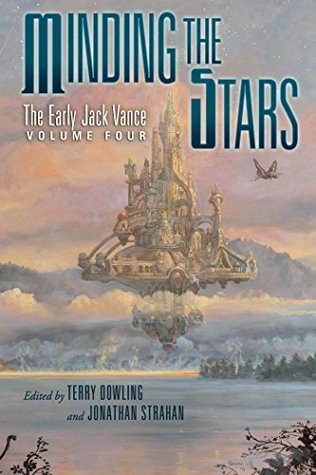
Part of Series
The first of three volumes. A legend has to start somewhere... As so many writers have said, it's in the shorter and mid-length work that the storytelling craft is best learned. Hard-Luck Diggings brings together fourteen such pieces from the first twelve years of Grand Master Jack Vance's genre-defining career, from back when he first worked to pay the mortgage, buy the groceries, travel the world, eventually building his own private 'dream castle' and starting a family. Like any writer serious about staying in the game, we see him targeting the markets of the day, doing what was needed to meet the tastes of editors and their readerships while at the same time perfecting his own special way of doing things so that his name, his distinctive voice, stood a chance (in modern marketing parlance) of becoming a viable 'brand.' Hard-Luck Diggings brings that fascinating process to life in fine style. As well as serving up vintage entertainment from one of the field's genuine masters, it provides an illuminating armchair tour of how the Jack Vance enterprise came to be, full of zest and life, the thrill of the upward climb and of so much more to be done. This is a book to be savoured with a twinkle in the eye, a knowing smile, but most of all, with a love of adventure and high romance firmly in place. Contents: Introduction-essay by Jonathan Strahan and Terry Dowling; -afterword-essay following each story, by Jack Vance; Hard-Luck Diggings [Magnus Ridolph] (1948); — The Temple of Han (1951); — The Masquerade on Dicantropus (1951); — Abercrombie Station (1952); — Three-Legged Joe (1953); — DP! (1953); — Shape-Up (1953); — Sjambak (1953); — The Absent-Minded Professor (1954); — When the Five Moons Rise (1954); — The Devil on Salvation Bluff (1955); — Where Hesperus Falls (1956); — The Phantom Milkman (1956); — Dodkin’s Job (1959). Cover illustration by Tom Kidd.
Author

Aka John Holbrook Vance, Peter Held, John Holbrook, Ellery Queen, John van See, Alan Wade. The author was born in 1916 and educated at the University of California, first as a mining engineer, then majoring in physics and finally in journalism. During the 1940s and 1950s, he contributed widely to science fiction and fantasy magazines. His first novel, The Dying Earth , was published in 1950 to great acclaim. He won both of science fiction's most coveted trophies, the Hugo and Nebula awards. He also won an Edgar Award for his mystery novel The Man in the Cage . He lived in Oakland, California in a house he designed.

